As pet lovers, we understand the importance of fostering harmonious relationships between different animal companions. Pitbulls often bear the burden of negative stereotypes, while cats are known for their independent and sometimes aloof nature. So, can these two seemingly different species coexist peacefully under the same roof?
In this article, we will explore this topic from various angles, shedding light on the potential challenges and offering insights into successful integration. Whether you’re a Pitbull owner considering adding a feline friend to your household or a cat lover contemplating bringing a Pitbull into your home, we’re here to provide you with valuable information and practical advice.
Join us as we debunk myths, share heartwarming stories, and provide expert guidance on creating a safe and harmonious environment for both Pitbulls and cats. Let’s unravel the truth and discover if these beautiful creatures can truly forge a lasting friendship. So, let’s delve into the fascinating world of Pitbulls and cats and uncover the secrets of their cohabitation.
Factors that Influence Pitbull-Cat Compatibility
Pitbulls are not a single breed, but rather a group of breeds that share some physical and behavioral characteristics. They are the American Pit Bull Terrier, the American Staffordshire Terrier, the Staffordshire Bull Terrier, and the American Bully.
Historically, these dogs were bred for strength, agility, intellect, and temperament. They are devoted to their owners and want to please them.
However, they also have some characteristics that can make them challenging to live with cats. They have a high prey drive, which means they may chase small animals that move fast.
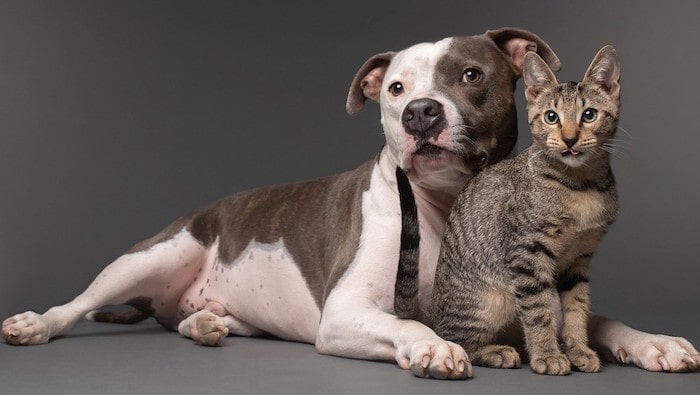
They also have a strong jaw and bite force, which means they can inflict serious damage if they catch their prey.
They are also energetic and playful, which means they may not know their own strength or how to be gentle with a cat.
Therefore, the compatibility of a pitbull and a cat depends largely on the individual personality, history, and training of both animals. Some factors to consider are:
- The temperament of the pitbull: Some pitbulls are more friendly, calm, and tolerant than others. They may be more willing to accept a cat as a friend or at least ignore it. Others may be more dominant, territorial, or reactive. They may see a cat as a threat or a toy and try to chase or attack it.
- The personality of the cat: Some cats are more confident, curious, and outgoing than others. They may be more interested in interacting with a dog or standing their ground. Others may be more timid, shy, or skittish. They may be more likely to run away or hide from a dog.
- The history of the pitbull: Some pitbulls have been exposed to cats since they were puppies and have learned to coexist peacefully with them. Others may have never seen a cat before or have had negative experiences with them. They may be more curious or fearful of a new animal in their home.
- The history of the cat: Some cats have been raised with dogs or have met friendly dogs before. They may be more comfortable and relaxed around them. Others may have never encountered a dog or have been chased or attacked by one. They may be more stressed or defensive around them.
- The socialization of the pitbull: Socialization is the process of exposing a dog to different people, animals, places, and situations in a positive way. It helps them develop confidence, adaptability, and sociability. A well-socialized pitbull will be more likely to get along with other animals, including cats.
- The training of the pitbull: Training is the process of teaching a dog how to behave in different situations and follow commands from their owner. It helps them learn manners, boundaries, and communication. A well-trained pitbull will be more likely to listen to their owner and leave the cat alone when told to do so.
Pitbulls: Their History, Temperament and Common Myths
As mentioned before, pitbulls are a type of dog that includes several breeds that were originally bred for bull-baiting, bear-baiting and dog fighting in England. These activities involved pitting dogs against bulls or bears for entertainment or gambling purposes. The dogs had to be strong, agile, courageous and tenacious to survive these brutal fights.
When these activities were banned in the 19th century, some people continued to use pitbulls for illegal dog fighting or as guard dogs for criminals. These people often abused or neglected their dogs or trained them to be aggressive or violent towards other animals or humans. These practices contributed to the negative image and reputation of pitbulls in the media and society.
However, not all pitbulls were used for these purposes. Many pitbulls were also kept as farm dogs or family pets by responsible owners who loved and cared for them. These owners recognized the positive traits of pitbulls, such as their loyalty, affection, intelligence and playfulness.
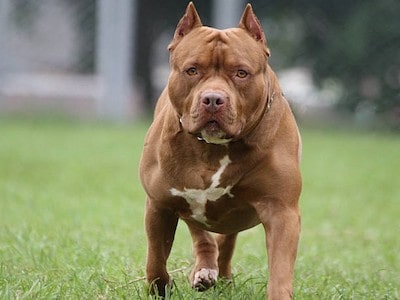
Pitbulls have a temperament that is influenced by both their genetics and their environment. They are not born aggressive or vicious; they are shaped by their upbringing and training. Pitbulls can be friendly, gentle, obedient and sociable if they are raised with love, respect and guidance.
Pitbulls can also be good with children if they are socialized and supervised properly. They can be protective of their family and home but not territorial or possessive. They can be energetic and active but not hyperactive or restless. They can be confident and assertive but not dominant or stubborn.
Pitbulls are also very adaptable and versatile dogs that can live in different settings and climates. They can live in apartments or houses, in urban or rural areas, in cold or warm weather. They can also participate in various activities and sports, such as agility, obedience, weight pulling, therapy or service.
Pitbulls are not a breed for everyone, however. They require a lot of attention, exercise, stimulation and socialization. They also need a firm, consistent and positive leader who can provide them with clear rules and boundaries. Pitbulls are not suitable for people who are inexperienced, irresponsible or indifferent towards dogs.
Cats: Their Personality, Behavior and Needs
Cats are small, furry animals that belong to the felidae family. They have been domesticated for thousands of years and are one of the most popular pets in the world. Cats have their own personality, behavior and needs that make them unique and different from dogs.
Cats are independent animals that can take care of themselves to some extent. They do not need constant supervision or attention, although they do enjoy human companionship and affection. Cats are also curious animals that like to explore their surroundings and learn new things. They can be playful and active but also calm and relaxed.
Cats are territorial animals that need their own space and privacy. They do not like to share their resources or belongings with other animals or humans. Cats are also clean animals that groom themselves regularly and prefer a tidy and sanitary environment.
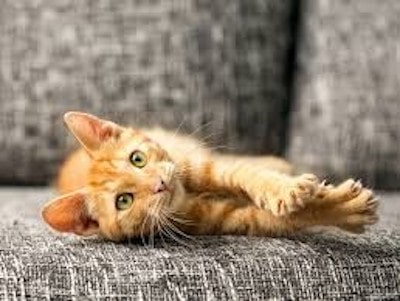
Cats are vocal animals that communicate with different sounds and body language. They can express their emotions, needs and preferences through their meows, purrs, hisses or growls.
Cats can also be social and friendly with other cats and humans, but they need time and space to adjust to new situations and environments. Cats can be scared or stressed by loud noises, sudden movements or unfamiliar smells. Cats also have natural instincts to hunt and chase small prey, such as mice or birds.
Cats have different needs depending on their age, breed and health. They need a balanced diet, fresh water, a litter box, a scratching post, a comfortable bed, toys and treats. They also need regular veterinary care, vaccinations, deworming, flea prevention and spaying or neutering.
Cats also need mental and physical stimulation, exercise and enrichment to prevent boredom, obesity or behavioral problems.
How to Introduce a Pitbull and a Cat: Tips and Precautions
If you want to introduce a pitbull and a cat to each other, you need to do it slowly and carefully. You also need to consider the personality, temperament and history of both animals. Some pitbulls may have a high prey drive or a low tolerance for cats, while some cats may be fearful or aggressive towards dogs.
The best scenario is to introduce a pitbull puppy to a kitten, as they are more likely to get along and bond with each other. However, this is not always possible or realistic. You may have an adult pitbull or an adult cat that you want to introduce to each other. In this case, you need to follow some steps and tips to make the introduction successful.
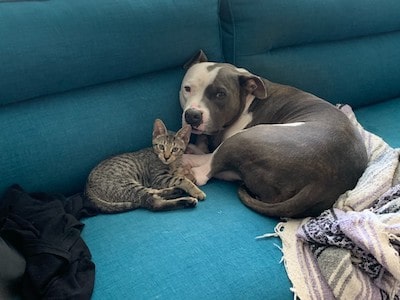
- Before the introduction, you need to prepare your home for both animals. You need to create separate areas for the pitbull and the cat, where they can feel safe and comfortable. You also need to provide them with their own food, water, toys and beds. You need to make sure that the cat has access to high places where it can escape or hide from the pitbull if needed.
- You also need to make sure that both animals are healthy, vaccinated, spayed or neutered before the introduction. This will prevent any diseases or unwanted pregnancies. You also need to trim the cat’s nails to prevent any injuries to the pitbull if the cat scratches it.
- You need to start the introduction by letting the pitbull and the cat smell each other’s scent without seeing each other. You can do this by rubbing a cloth on one animal’s fur and placing it near the other animal’s area. You can also swap their bedding or toys. This will help them get used to each other’s smell and reduce any anxiety or curiosity.
- After a few days of scent swapping, you can move on to visual contact. You can do this by placing a baby gate or a screen door between the pitbull’s area and the cat’s area. This will allow them to see each other without touching each other. You can also feed them on opposite sides of the barrier at the same time. This will help them associate each other with something positive.
- You need to monitor their reactions during visual contact. If they show signs of interest, calmness or indifference towards each other, you can proceed to the next step. If they show signs of fear, aggression or excitement
How to Foster a Harmonious Relationship Between a Pitbull and a Cat
Once you have introduced your pitbull and your cat to each other, you need to foster a harmonious relationship between them. This will require ongoing training, supervision and enrichment for both animals. Here are some tips to help you achieve this goal:
1) Training: You need to train your pitbull to be friendly, calm and obedient around your cat. You can use positive reinforcement techniques, such as treats and praise, to reward your pitbull for good behavior.
You can also use redirection techniques, such as toys or commands, to distract your pitbull from bad behavior. You need to be consistent and persistent with your training, and avoid any harsh or negative methods that may damage your pitbull’s trust or confidence.
You can also enroll your pitbull in an obedience class or hire a professional trainer to help you with the training process.
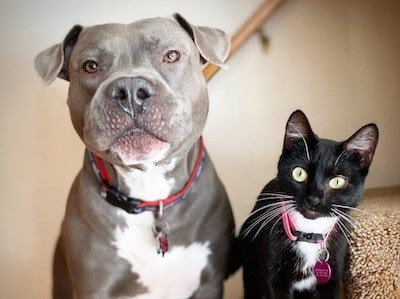
2) Supervision: You need to supervise your pitbull and your cat whenever they are together, especially in the beginning. You need to watch for any signs of fear, aggression or excitement from either animal, and intervene if necessary.
You need to keep your pitbull on a leash or in a crate when you are not around, and make sure your cat has access to high places where it can escape or hide if needed.
You need to be careful not to leave any food, toys or other items that may cause conflict or competition between them.
3) Enrichment: You need to provide your pitbull and your cat with enough mental and physical stimulation, exercise and enrichment to prevent boredom, obesity or behavioral problems. You need to play with them, walk them, groom them and cuddle with them regularly.
You need to give them different toys, puzzles and games that challenge their minds and bodies. You need to expose them to different sights, sounds and smells that enrich their senses.
You need to make sure they have their own space and time where they can relax and rest.
FAQs
Are Pitbulls naturally aggressive towards cats?
Pitbulls, like any other dog breed, can vary in their behavior towards cats. While some Pitbulls may have a higher prey drive or be less tolerant of cats, others can be gentle and accepting. Proper socialization, training, and gradual introductions can help establish positive relationships between Pitbulls and cats.
What signs should I look for to know if my Pitbull and cat are getting along?
Signs of a positive interaction between a Pitbull and a cat include relaxed body language, friendly approaches, play behavior without aggression, and mutual grooming. However, it’s essential to remember that each animal has its unique personality, and it may take time for them to establish a comfortable relationship.
Should I be concerned about leaving my Pitbull and cat unsupervised?
It’s generally recommended to supervise interactions between Pitbulls and cats, especially during the initial stages of their relationship. Even if they seem to get along well, it’s important to remember that animals can be unpredictable, and it’s better to err on the side of caution. Gradually increase unsupervised time as you observe positive behavior and a solid foundation of trust between them.
Can Pitbulls live peacefully with cats in multi-pet households?
Yes, Pitbulls can live peacefully with cats in multi-pet households. By providing each pet with their own space, plenty of positive reinforcement, and adhering to a structured routine, you can help ensure a harmonious living environment. Proper training and addressing any behavioral issues promptly can also contribute to a successful multi-pet household dynamic.
Well, That’s a Wrap
Pitbulls and cats are often seen as incompatible or enemies, but this is not true for all pitbulls. Pitbulls are loyal, affectionate, intelligent and playful dogs that can make great family pets.
Cats are independent, curious, territorial and vocal animals that have their own personality and needs. With proper socialization, training and introduction, pitbulls and cats can live together in harmony.
However, this does not mean that it is easy or simple to introduce a pitbull and a cat to each other. It requires a lot of patience, dedication and responsibility from the owner. It also requires ongoing training, supervision and enrichment for both animals.
Pitbulls are not a breed for everyone; they require a lot of attention, exercise, stimulation and socialization. They also need a firm, consistent and positive leader who can provide them with clear rules and boundaries.
If you are a pet lover who wants to have both dogs and cats in your home, you need to consider the personality, temperament and history of both animals. You also need to consider your own lifestyle, preferences and expectations. Pitbulls can live with cats, but only if you are willing to put in the effort and care that they deserve.
